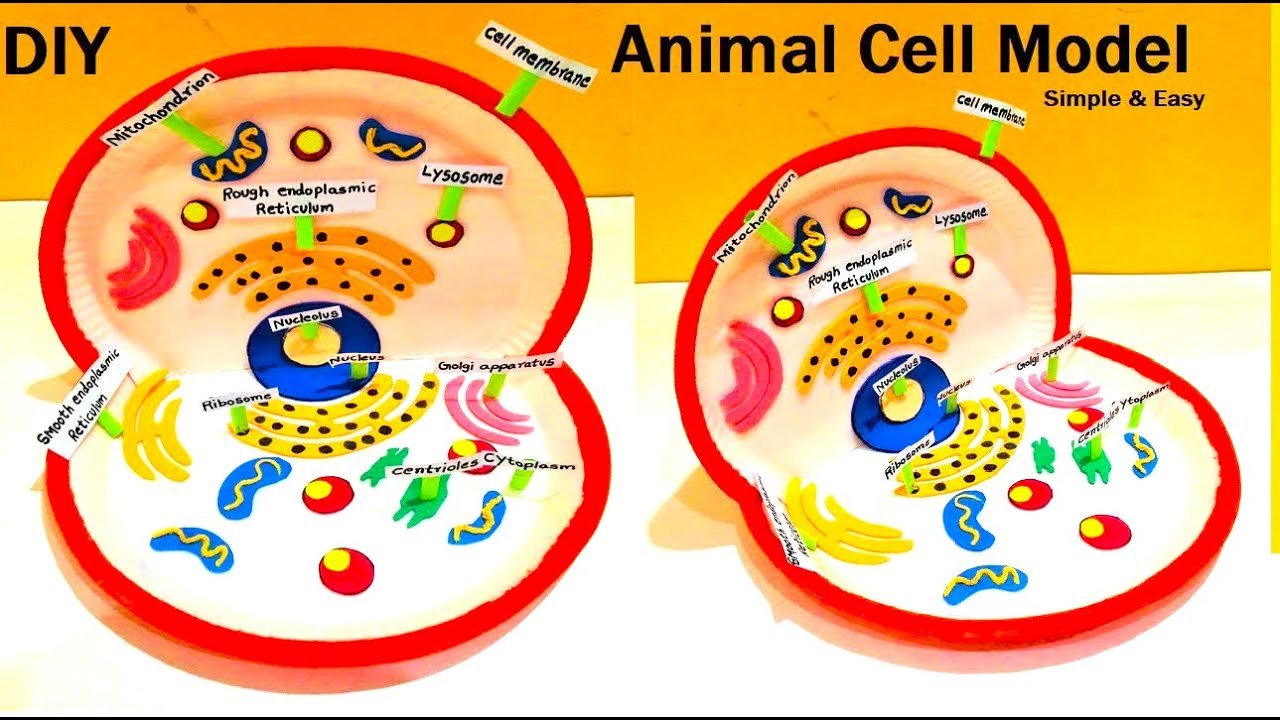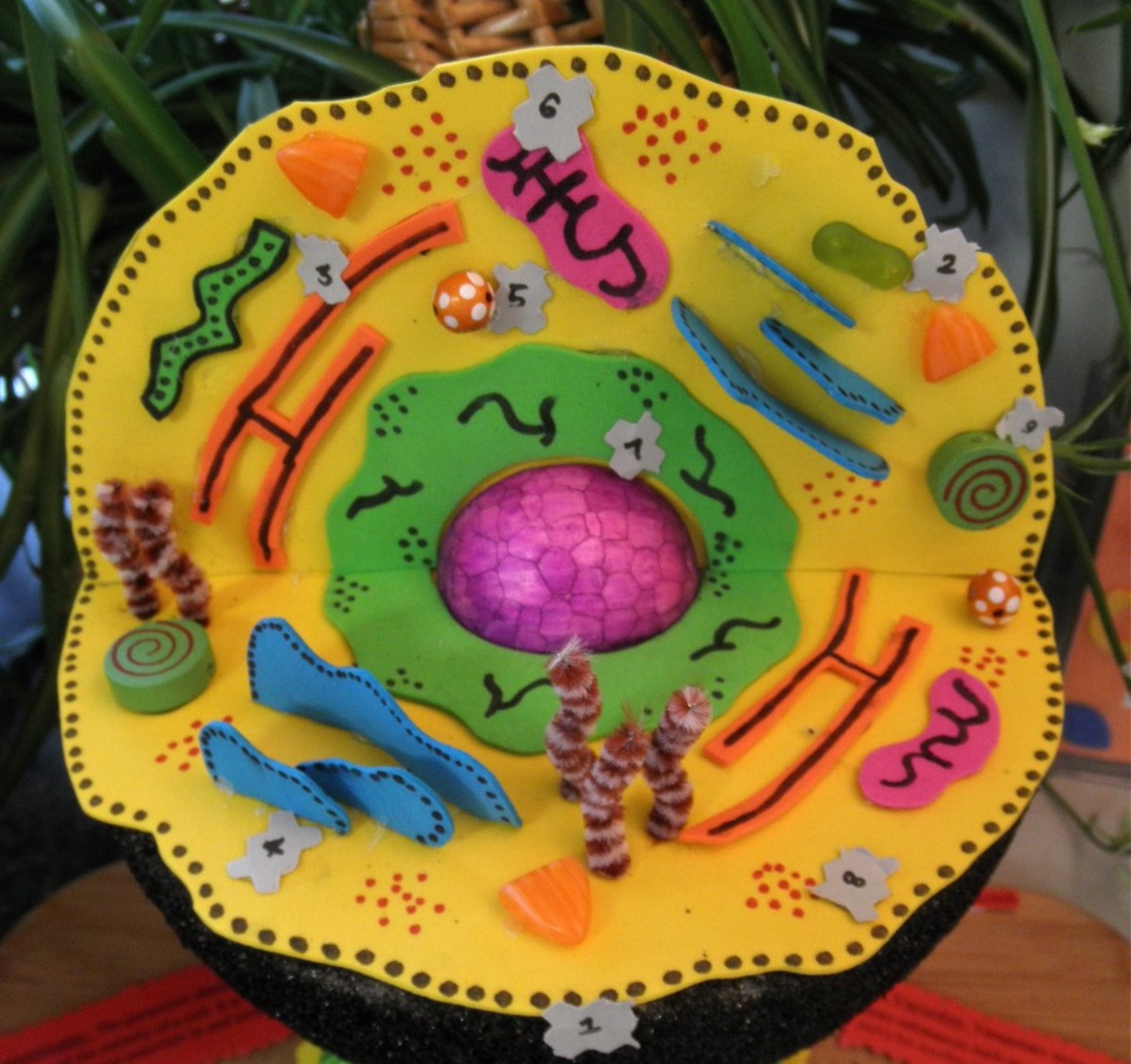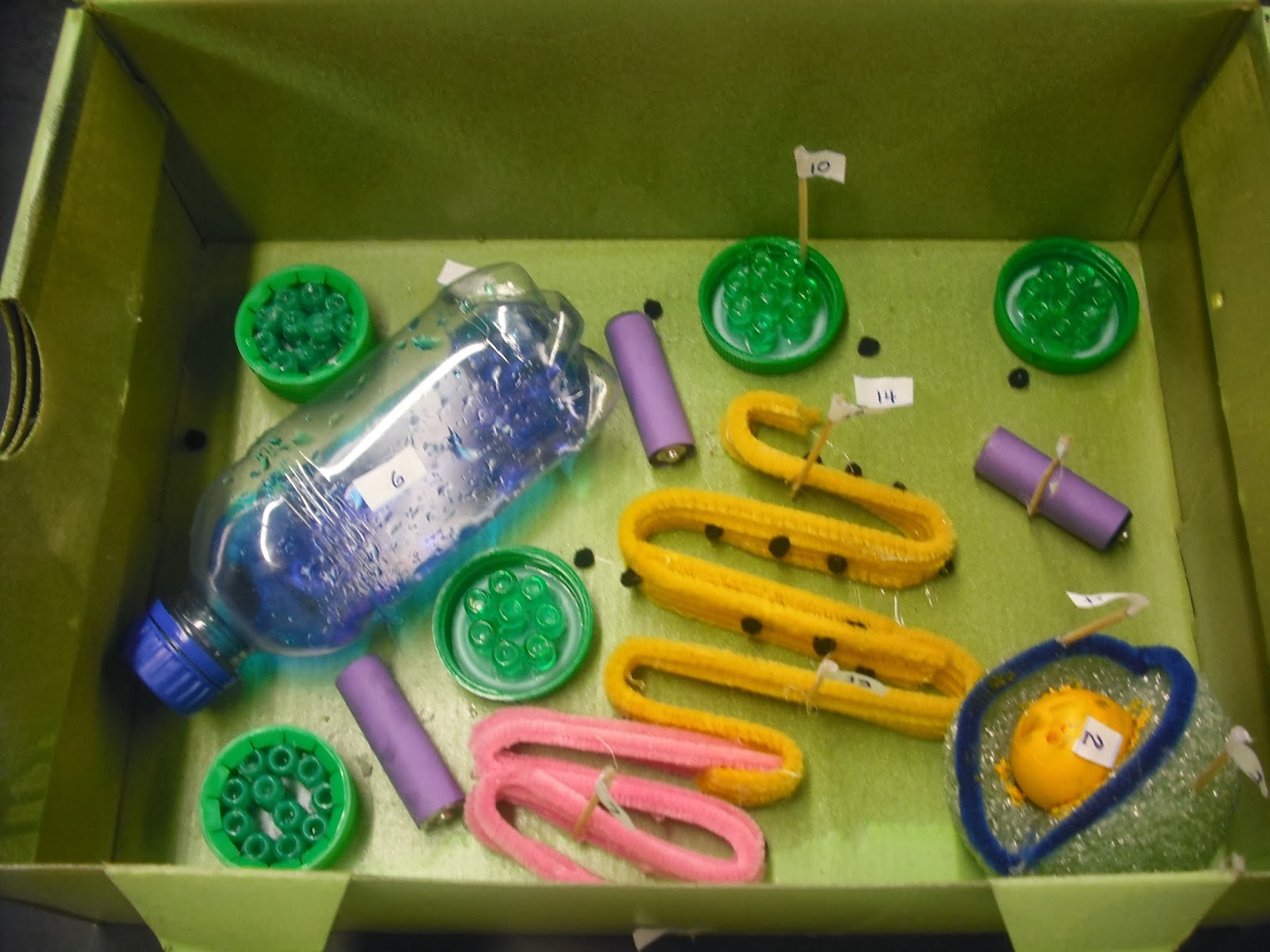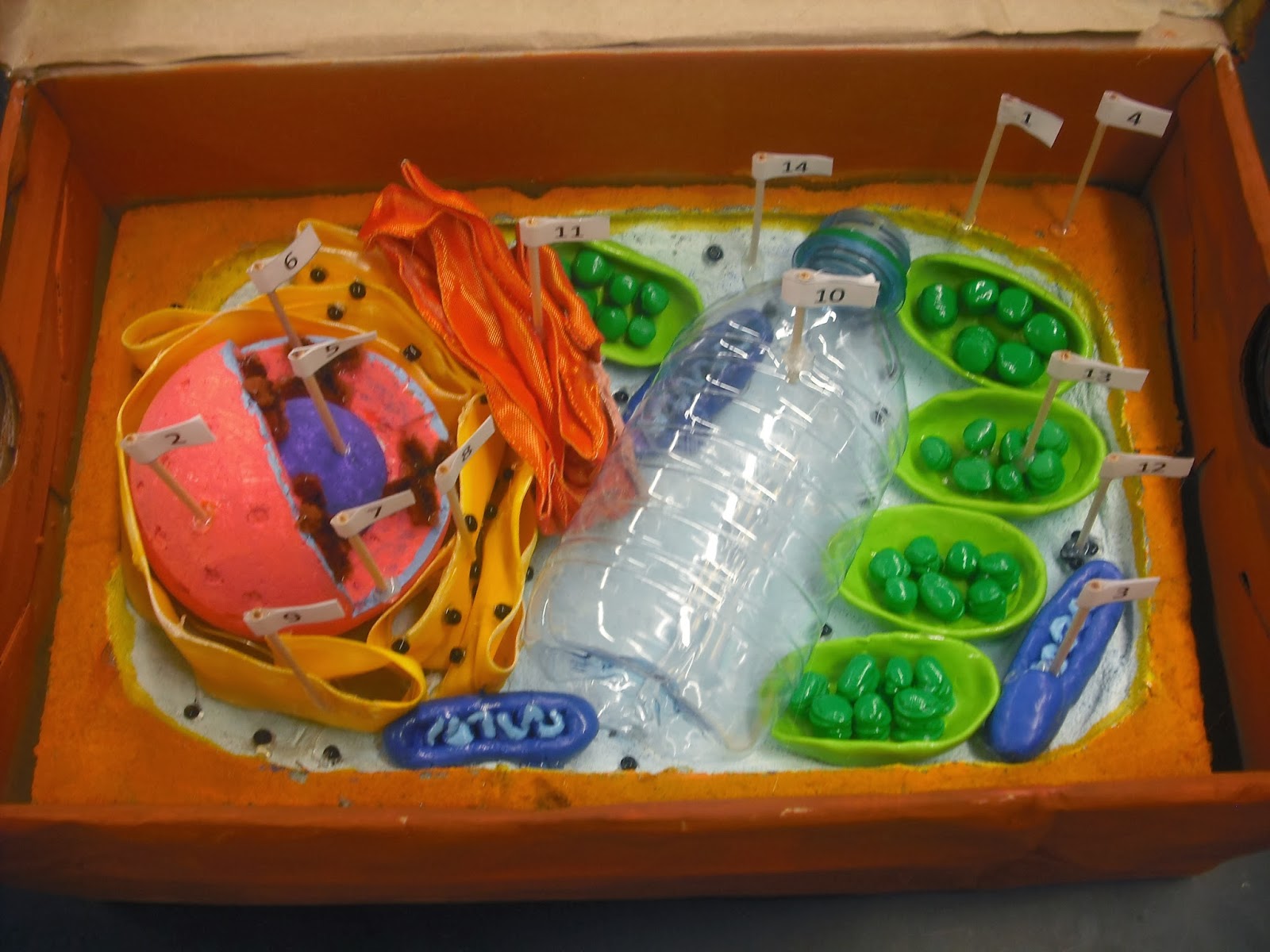3d Model Of Animal Cell Using Recycled Materials

Alright, picture this: a lumpy, colorful blob sitting proudly on your kitchen table. No, it's not a forgotten science experiment gone wrong. It’s a work of art! A magnificent, if slightly wonky, 3D model of an animal cell, crafted entirely from… trash!
Yes, you heard right. We're talking egg cartons transformed into a nucleus, bottle caps bravely becoming ribosomes, and maybe even that stray sock (clean, hopefully!) finding a noble purpose as the endoplasmic reticulum.
Hunting for Cell Parts in Your Recycling Bin
Think of it as a scavenger hunt, but instead of pirate treasure, you're searching for cellular components! That crumpled newspaper? Potential Golgi apparatus! Those colorful plastic lids? Hello, mitochondria!
It’s all about creativity and a healthy dose of "that kind of looks like…” judgment. Don't be afraid to get silly. If a toilet paper roll seems suspiciously like a vacuole, embrace it! This is art, people. It's interpretive!
One family I know used a squished-up juice box as the cell membrane. Resourceful? Absolutely. Accurate? Debatable. Hilarious? Undeniably!
The Nucleus: Egg-cellent Choice!
The nucleus, the brain of the cell, usually gets the prime real estate. And what better way to represent this vital organelle than with an egg carton compartment?
It's the perfect size, shape, and even has that inherent protective quality, just like a real nucleus safeguarding its precious DNA. Plus, you can paint it purple. Because why not?
Don't forget the nucleolus! A stray button or a rolled-up piece of aluminum foil can do the trick. It’s all about adding those crucial details.
Ribosomes: Bottle Cap Brigade
Ah, the ribosomes, the protein-making factories. These little guys need representation, and bottle caps are up for the challenge. Small, plentiful, and readily available, they’re ribosome royalty!
Glue them onto the endoplasmic reticulum (that sock, remember?) or let them float freely in the cytoplasm (represented by… play dough? Jelly? Your call!).
Just imagine the tiny bottle caps working tirelessly, churning out proteins for your recycled cell model. It's a heartwarming thought, isn't it?
Mitochondria: Powerhouse of Plastic!
Every cell needs power, and that's where the mitochondria come in. Here's where those brightly colored plastic lids from yogurt containers or snack packs shine.
Their oblong shape is perfect for mimicking these energy-generating organelles. Plus, the vibrant colors add a much-needed splash of pizzazz to your cellular creation.
Arrange them strategically around the cell, powering your masterpiece with the might of repurposed plastic. Go green, literally!
The Beauty of Imperfection
The best part about this project is that it's perfectly imperfect. Your 3D animal cell model won't look like a textbook diagram, and that’s the point!
It's a testament to your creativity, resourcefulness, and willingness to embrace the absurd. It’s a conversation starter, a fun learning experience, and a unique piece of art all rolled into one.
So, raid your recycling bin, gather your family (or your bravest friends), and get ready to build a cell-ebration of science and sustainability. Just don’t eat the play dough cytoplasm.
Remember, the only limit is your imagination (and maybe the size of your kitchen table).
Now, go forth and create! Your lumpy, lovable, recycled cell model awaits!


















